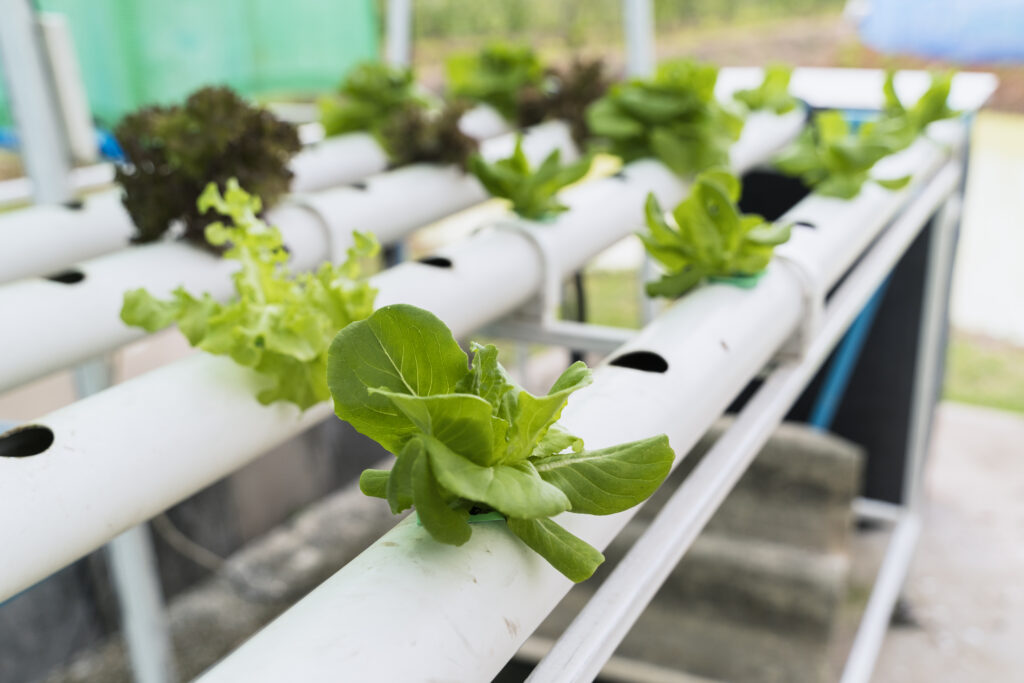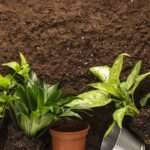Hydroponics is revolutionizing gardening by growing plants in nutrient-rich water instead of soil. Whether you’re an apartment dweller dreaming of fresh produce or a homeowner seeking sustainable gardening solutions, hydroponics offers a practical and eco-friendly way to grow plants year-round. With its ability to save space, conserve water, and eliminate soil-borne pests, hydroponics is redefining how we cultivate food.
In this guide, we’ll explore the basics of hydroponics, its various systems, benefits, and tips to help you start your hydroponic journey. By the end, you’ll understand why hydroponics is not just a trend but a sustainable movement that’s shaping the future of gardening. Whether you’re an apartment dweller or a homeowner with a small backyard, hydroponics ensures you can grow fresh, organic produce year-round without compromise.
What Is Hydroponics?
Hydroponics might sound like a futuristic concept, but it’s quite simple. Instead of planting crops in soil, hydroponic systems use water enriched with nutrients to feed plants directly. In this controlled environment, plants grow faster, produce higher yields, and use less water than traditional gardening methods.
Key Benefits of Hydroponics:
- Water Efficiency: Uses up to 90% less water compared to soil gardening.
- Space-Saving: Vertical and compact setups make it perfect for small spaces.
- Year-Round Gardening: Controlled environments let you grow in any season.
- Faster Growth: Direct nutrient access accelerates plant development.
- Eco-Friendly: Reduces the need for harmful pesticides and fertilizers.
Hydroponics isn’t just for commercial farms, it’s perfect for home gardeners, too. Let’s dive into how it works and what you need to get started.
How Hydroponics Works
In a hydroponic system, plants are supported by a growing medium such as clay pebbles, rock wool, or coconut coir. The roots are suspended in or near water enriched with essential nutrients, which eliminates the unpredictability of soil quality. Additionally, you can control the pH levels, oxygen supply, and light exposure, ensuring your plants thrive in an ideal environment.
Why is Hydroponics So Efficient?
- Direct Nutrient Delivery: Plants don’t need to search for nutrients, saving energy and allowing them to focus on growth.
- Closed Systems: Recycled water minimizes waste.
- Pest Control: Without soil, pests like nematodes and weeds are no longer a problem.
Types of Hydroponic Systems: Choosing the Right One
Hydroponics isn’t one-size-fits-all. There are six main systems to choose from, depending on your budget, space, and level of expertise. Here’s a breakdown to help you decide:
1. Deep Water Culture (DWC)
- How It Works: Plant roots are submerged in a nutrient-rich solution.
- Ideal For: Beginners due to its simplicity and low cost.
- Pro Tip: Add an air pump to oxygenate the water and prevent root rot.
2. Nutrient Film Technique (NFT)
- How It Works: A thin film of water flows continuously over plant roots.
- Ideal For: Lettuce, herbs, and other lightweight plants.
- Pro Tip: Ensure proper water flow to prevent drying out.
3. Drip Systems
- How It Works: Nutrients are dripped directly onto each plant’s roots.
- Ideal For: A variety of plants, from leafy greens to fruiting crops.
- Pro Tip: Use a timer to automate watering.
4. Ebb and Flow (Flood and Drain)
- How It Works: Water periodically floods the growing area and then drains away.
- Ideal For: Plants that need periods of dryness between watering.
- Pro Tip: Use clay pebbles for good drainage.
5. Aeroponics
- How It Works: Plant roots are suspended in the air and misted with nutrients.
- Ideal For: Advanced growers seeking maximum oxygen exposure.
- Pro Tip: Ensure consistent misting to avoid root drying.
6. Wicking Systems
- How It Works: Plants draw water from a reservoir through a wick.
- Ideal For: Beginners looking for a low-maintenance setup.
- Pro Tip: Use lightweight, absorbent media like coconut coir.
Why Hydroponics is Perfect for Urban Gardening
1. Space-Saving Solutions
For city dwellers, limited space is often a barrier to gardening. Hydroponics solves this with compact, vertical, and wall-mounted systems. Even small balconies or countertops can accommodate thriving hydroponic gardens. You can grow lettuce, herbs, and even strawberries in just a few square feet!
2. Water Conservation
Traditional gardening often leads to water wastage due to runoff and evaporation. Hydroponic systems recycle water in a closed loop, using only what the plants need. This makes it an excellent option for areas with water restrictions.
3. Year-Round Freshness
Hydroponics eliminates seasonal gardening limitations. By controlling the light, temperature, and humidity, you can grow crops like tomatoes, basil, and spinach all year long. Imagine enjoying fresh salads even in the middle of winter!
Setting Up Your First Hydroponic Garden
Starting with hydroponics doesn’t have to be overwhelming. Follow these steps to set up your system:
Essential Equipment for Beginners
- Water Reservoir: Holds the nutrient solution.
- Nutrient Solution: Contains essential minerals like nitrogen, phosphorus, and potassium.
- Growing Medium: Supports the plants (e.g., clay pebbles, rock wool).
- Pump and Air Stones: Circulate and oxygenate the water.
- Grow Lights: Provides artificial light for photosynthesis.
Step-by-Step Guide
- Choose a hydroponic system (DWC is great for beginners).
- Assemble your system according to instructions.
- Fill the reservoir with water and add nutrients.
- Check and adjust the pH to 5.5–6.5 for most plants.
- Place plants in the growing medium and monitor their growth.
- Maintain proper lighting and water oxygenation.
Best Plants for Hydroponics
Beginner-Friendly Plants
- Lettuce: Grows quickly and is easy to manage.
- Basil and Mint: Thrive in hydroponic systems and add fresh flavour to meals.
- Parsley: A forgiving herb that’s perfect for beginners.
Fruiting Plants
- Tomatoes: Cherry tomatoes are especially rewarding.
- Peppers: Bell peppers and chillies grow well in controlled environments.
- Strawberries: A favourite for advanced gardeners with NFT systems.
Exotic Options
For a challenge, try orchids, dwarf citrus trees, or even wasabi. These require precision and patience but yield impressive results.
Caring for Your Hydroponic Garden
To ensure your plants thrive, it’s important to monitor and maintain your system:
1. Water Quality and Nutrients
- Use a pH meter to keep the water within the ideal range (5.5–6.5).
- Check nutrient levels weekly and top off as needed.
- Replace the nutrient solution every 2–3 weeks to prevent buildup.
2. Light and Temperature
- Most plants need 12–16 hours of light daily. LED grow lights are energy-efficient and customizable.
- Maintain a consistent temperature (65–75°F) for optimal growth.
3. Preventing Issues
- Algae: Use opaque reservoirs to block light.
- Root Rot: Ensure proper oxygenation and avoid overwatering.
- Pests: Inspect plants regularly and use natural remedies if needed.
Advanced Hydroponics Techniques
1. Automation
Automated systems with timers, pH controllers, and nutrient doses can make hydroponics nearly self-sufficient. These tools are perfect for busy gardeners or those looking to scale up their efforts.
2. Aquaponics
Combine hydroponics with aquaculture to create a closed-loop ecosystem. Fish waste provides nutrients for plants, and the plants filter water for the fish. It’s a sustainable method that’s gaining popularity among eco-conscious growers.
Why Hydroponics is Perfect for India
India faces several agricultural and environmental challenges that make hydroponics highly relevant:
Urbanization and Shrinking Farmland
By 2030, 40% of India’s population is expected to live in urban areas, significantly reducing available farmland. Hydroponics can thrive in urban settings—on rooftops, balconies, or even within indoor vertical farms.
Water Scarcity
Agriculture accounts for nearly 80% of freshwater usage in India, and hydroponics drastically reduces this consumption. Systems like Deep Water Culture (DWC) and Nutrient Film Technique (NFT) recycle water, making every drop count.
Food Security
India needs to produce more food to meet the demands of its growing population. Hydroponics enables higher yields per square foot compared to traditional farming, helping address food security concerns.
Rising Awareness of Organic Produce
With an increasing focus on health and wellness, India’s demand for pesticide-free, organic vegetables is growing. Hydroponics provides a way to cultivate clean, chemical-free crops at home or commercially.
Climate-Resilient Agriculture
As climate change impacts traditional farming, hydroponics offers a controlled environment unaffected by erratic weather, floods, or droughts.
How to Get Started with Hydroponics in India
Starting hydroponics in India is easier than ever, thanks to increasing access to equipment, resources, and training:
Basic Setup Costs
DIY systems can start from as low as ₹5,000.
Pre-built kits range from ₹10,000 to ₹50,000, depending on size and features.
Access to Nutrients
Local suppliers and online platforms offer nutrient solutions tailored to Indian crops.
Training and Resources
Workshops and courses by organizations like the Indian Council of Agricultural Research (ICAR) and private hydroponic farms provide hands-on learning.
Hydroponics in India: Opportunities and Prospects
India’s unique agricultural challenges make it a fertile ground for hydroponic innovation. Here’s a closer look at its potential:
Growing Urban Demand for Fresh Produce
With rapid urbanization, cities like Mumbai, Delhi, and Bengaluru are seeing a surge in demand for local, fresh vegetables. Hydroponic farms can address this by supplying high-quality produce directly to urban consumers, reducing transportation costs and carbon footprints.
Rising Hydroponic Startups
Several Indian startups, such as Clover, Barton Breeze, and Future Farms, are leveraging hydroponics to grow pesticide-free, nutritious crops. These companies are making technology accessible to farmers and urban gardeners alike.
Government Support
Initiatives like the Paramparagat Krishi Vikas Yojana (PKVY) and Pradhan Mantri Krishi Sinchayee Yojana (PMKSY) promote sustainable farming techniques, including hydroponics. Subsidies for greenhouse farming and urban agriculture further support its adoption.
Export Potential
India can use hydroponics to cultivate high-value crops like herbs, strawberries, and exotic vegetables for export. Countries in the Middle East, for instance, heavily rely on imports of fresh produce due to harsh climatic conditions.
Employment Opportunities
Hydroponics can create jobs in technology development, maintenance, and training. It also encourages entrepreneurship, as many small-scale growers can start hydroponic farms with minimal investment.
The Future of Hydroponics
Hydroponics is at the forefront of sustainable agriculture. From urban farming to AI-powered smart systems, innovations are making it more accessible and efficient than ever. Portable hydroponic farms and vertical gardens are even being used to combat food insecurity in urban areas.
Success Stories: Home gardeners around the world are transforming their living spaces with hydroponics, growing fresh produce in apartments, basements, and greenhouses. These inspiring stories showcase how anyone can become part of this eco-friendly movement.
Conclusion: Start Your Hydroponic Journey Today
Hydroponics is more than just a gardening method, it’s a lifestyle change that promotes sustainability, health, and creativity. Whether you’re a beginner or an experienced gardener, hydroponics offers endless opportunities to grow fresh, organic produce at home.
Ready to Get Started? With affordable starter kits and plenty of online resources, there’s no better time to dive into hydroponics. Leap, and watch your garden flourish, one nutrient-rich drop at a time.


